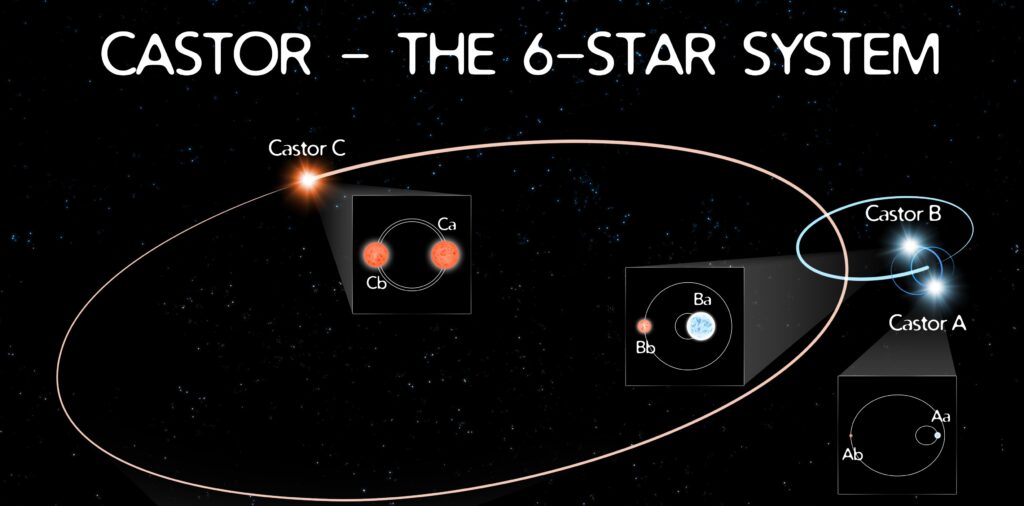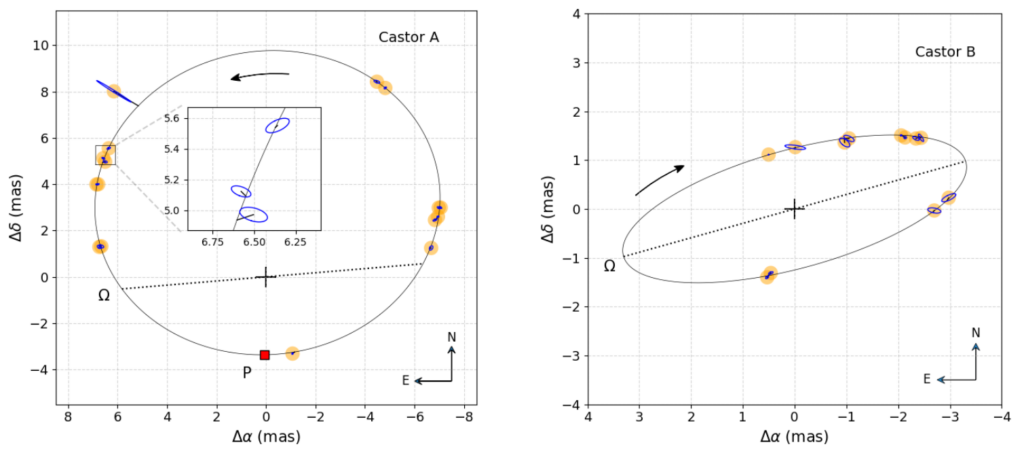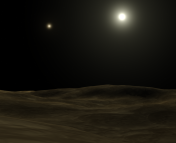Title: The Orbits and Dynamical Masses of the Castor System
Authors: Guillermo Torres, Gail H. Schaefer, John D. Monnier, and 12 additional co-authors
First Author’s Institution: Center for Astrophysics | Harvard & Smithsonian, 60 Garden
St., Cambridge, MA 02138, USA
Status: Submitted to The Astrophysical Journal [open access]
In today’s bite, astronomers study the orbits of a sextuplet system, an absurdly complex arrangement of six stars in orbit around one another, in order to measure their masses once and for all. To do so, they ended up using nearly 200 years worth of data!
Stellar Ballrooms: laboratories for weighing stars
Stellar multiples – binaries, triple stars, and even higher order configurations of 4, 5, or, in today’s case, 6 stars – have a lot to teach us. By measuring their orbits and applying Kepler’s Laws, astronomers can determine the masses of stars (and other bodies, like planets and black holes). These are extremely important measurements to make, because other measurements of stars (and planets, and other things) can only be used to infer an object’s mass by making a model assumption based on the kinds of light it emits. A lot of our understanding of stars is thanks to these “dynamical” mass measurements from binary stars.
Stellar multiples are also interesting in their own right – how they orbit and in what way tells astronomers a lot about how star formation occurs, and what the likely and unlikely outcomes of star formation are.
Castor: six stars in a trench-coat
Castor holds the distinction of being the first true physical binary to be recognized as such (Herschel 1803), based on changes in the direction of the line joining the two stars observed over a few decades. This has been regarded by some as the first empirical evidence that Newton’s laws of gravitation apply beyond the solar system.
Torres et al. 2022, §1, ¶1
Castor is the second brightest star in the constellation Gemini, next only to Pollux. With the advent of telescopes, astronomers in the 18th and 19th centuries discovered that Castor was actually a binary, Castor AB. Then, it became a triple star system when YY Geminorum (Castor C) was found to orbit around AB. Trouble really started brewing when, in 1896, Castor B was measured with a spectrograph twice, the measurements taken four days apart. The radial velocity of the star had changed dramatically between the two observations, and further measurements indicated the star was a spectroscopic binary. Subsequent observations of Castor A and Castor C proved them to be spectroscopic binaries as well! Six stars, all dancing about each other.

The motion of Castor AB has been recorded since the 18th century, and so today’s astronomers had a lot of archival data to work with when they fit a orbit to their data. But they didn’t stop at the archive, they wanted to fully characterize the orbits of this system. Even triple star systems can be complicated to model, because the contribution to a given star’s motion from the other stars must be accounted for. With only radial velocities, a full orbital solution can’t be determined, because radial velocities only tell you about the motion of a star towards or away from the observer. The spectroscopic binaries are so close together, though, that even the largest telescopes with powerful adaptive optics couldn’t resolve them apart. Without measuring the on-sky motion of the binaries, their orbits and therefore their true masses remained unknown.
Interferometry to the rescue!
Today’s authors took new observations of Castor A and Castor B using the Center for High Angular Resolution Astronomy (CHARA) array, a long baseline optical interferometer located on Mt. Wilson in California. With the resolving power of interferometry, they were able to directly measure the position of each spectroscopic binary pair over time, mapping out each orbit in all 3 dimensions for the first time (Figure 2). Combined with archival astrometry and radial velocity measurements from as far back as 1778, they were able to fit each orbital path and determine the dynamical masses for all of the components in the system.

The authors determined the masses of the stars to a precision of 1%, which allowed them to fully characterize the stars and infer their ages (another notoriously difficult measurement to make). They discovered that the orbits of the binary pairs around each other were all misaligned, but nevertheless believe the entire system to be dynamically stable. These measurements will enable future studies of the dynamical stability of the system at even greater detail, and help us understand what the eventual fate of these rare sextuple systems might be.
Astrobite edited by: Pratik Gandhi
Featured image credit: NASA/JPL (public domain)




